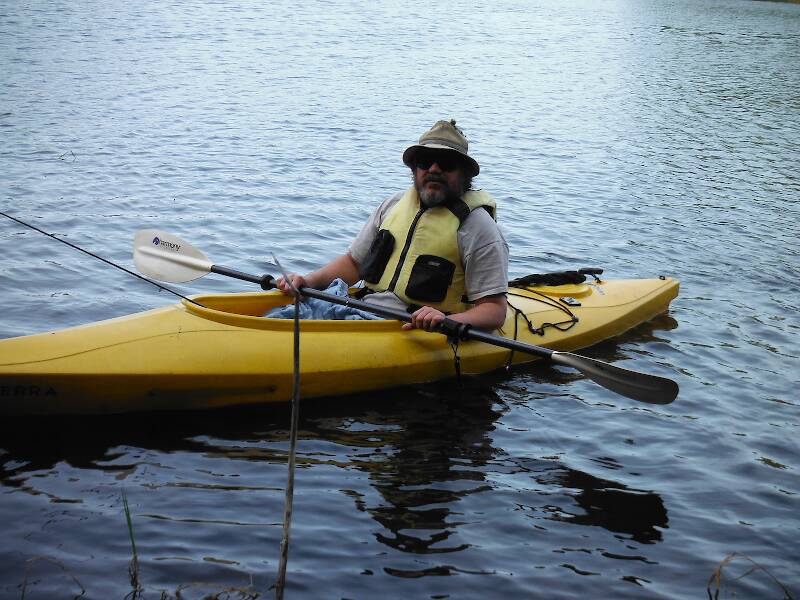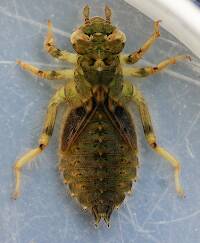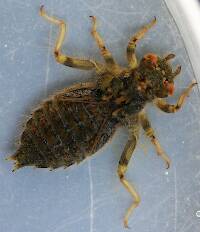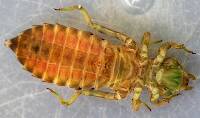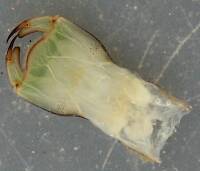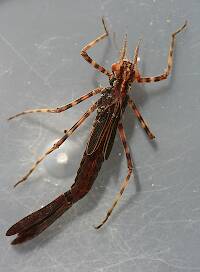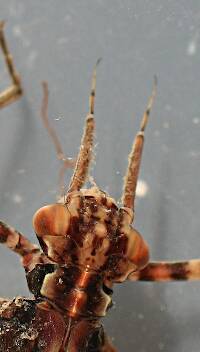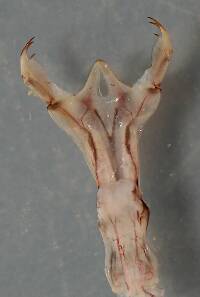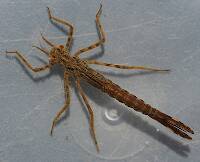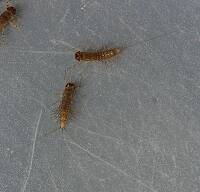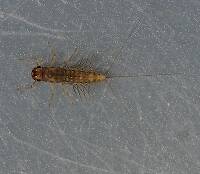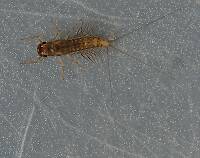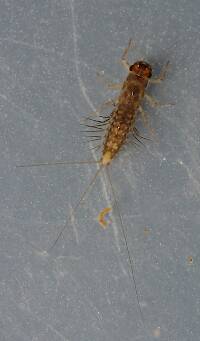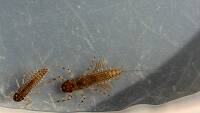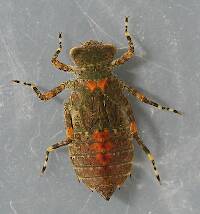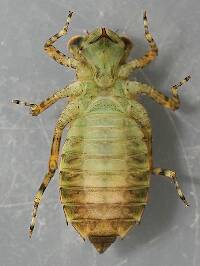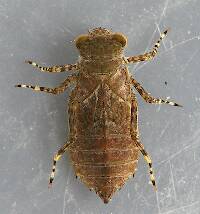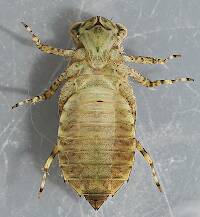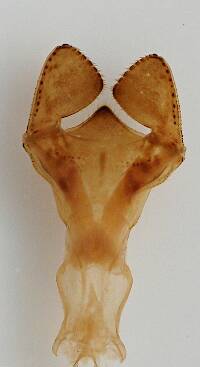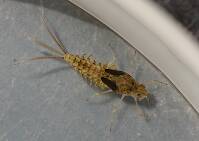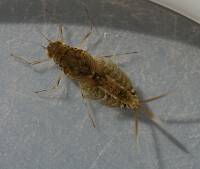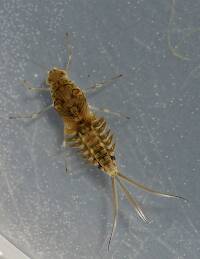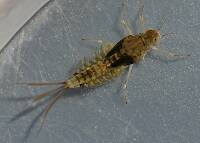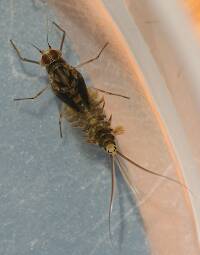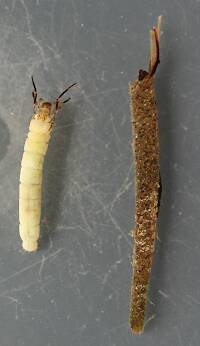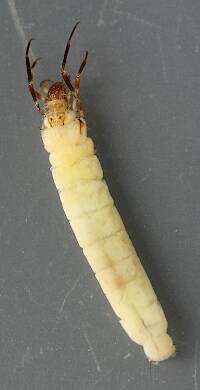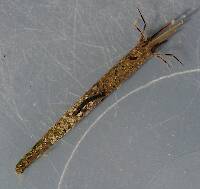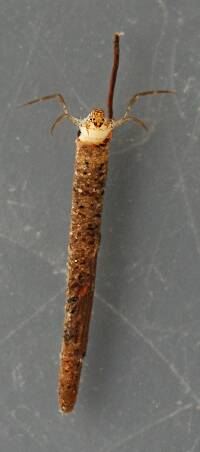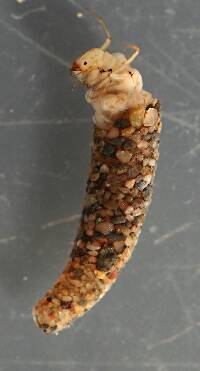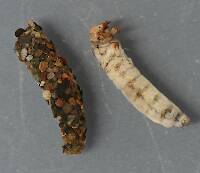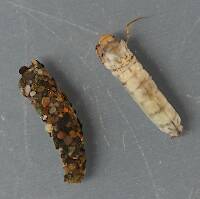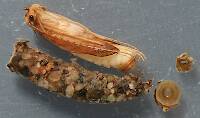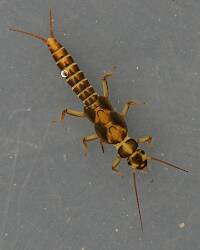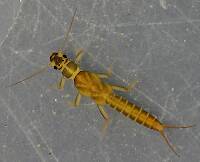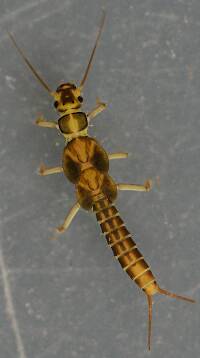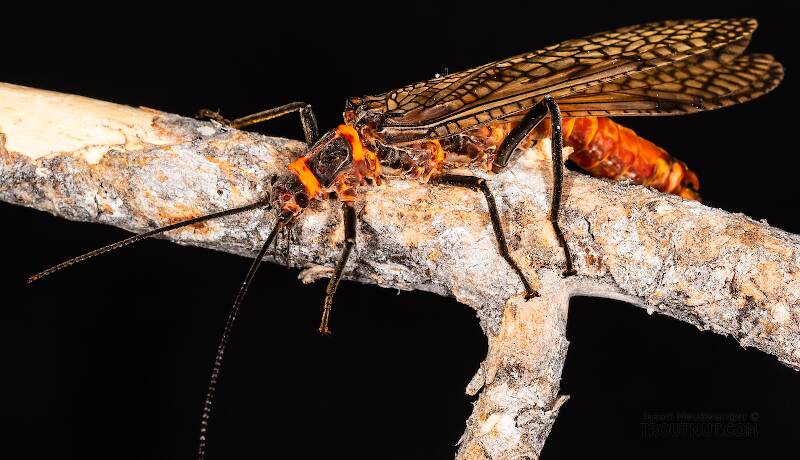
Salmonflies
Pteronarcys californica
The giant Salmonflies of the Western mountains are legendary for their proclivity to elicit consistent dry-fly action and ferocious strikes.
Featured on the forum
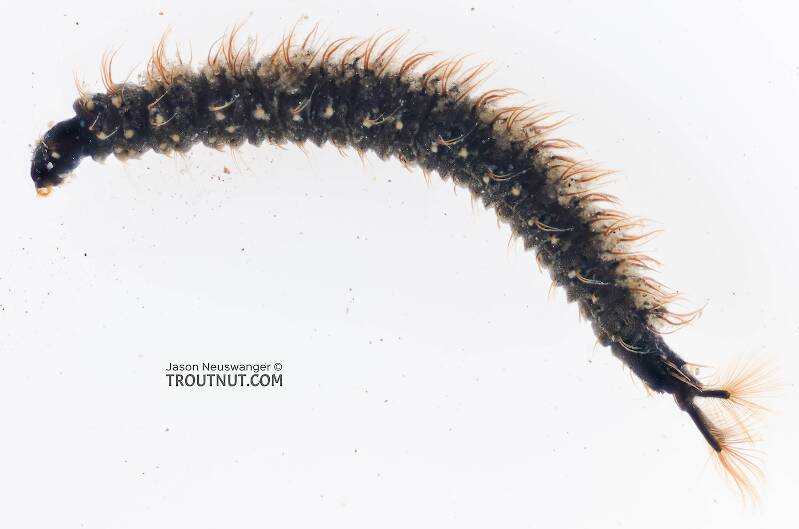
This wild-looking little thing completely puzzled me. At first I was thinking beetle or month larva, until I got a look at the pictures on the computer screen. I made a couple of incorrect guesses before entomologist Greg Courtney pointed me in the right direction with Psychodidae. He suggested a possible genus of Thornburghiella, but could not rule out some other members of the tribe Pericomini.

Troutnut is a project started in 2003 by salmonid ecologist Jason "Troutnut" Neuswanger to help anglers and
fly tyers unabashedly embrace the entomological side of the sport. Learn more about Troutnut or
support the project for an enhanced experience here.
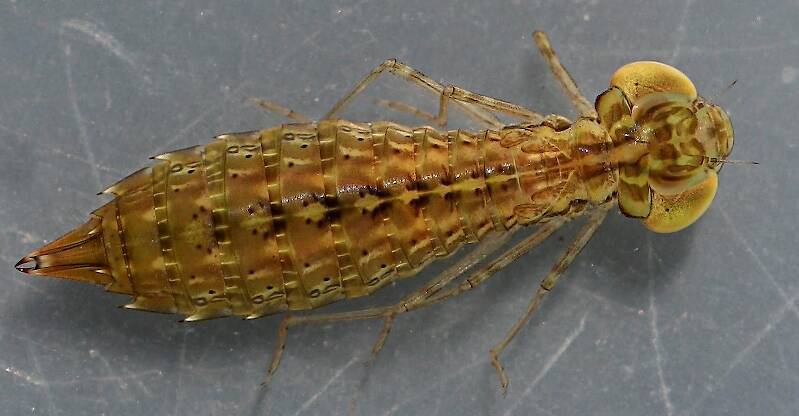
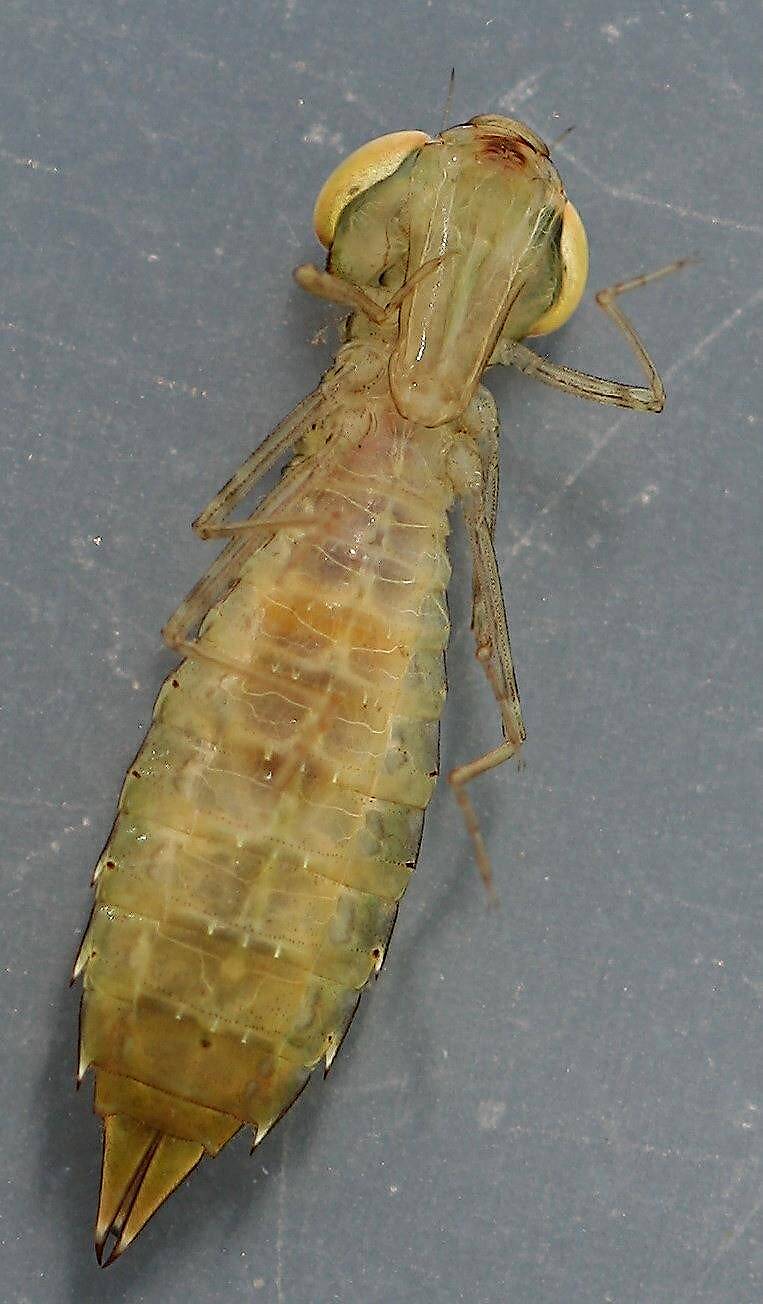
Millcreek on Nov 21, 2017November 21st, 2017, 2:05 pm EST
These are usually found in slow to stagnant areas in the Russian River. They are approximately 16-20 mm long and are found in the river from June through August.
Jonathan - Are these the dragonfly naiads you saw? They vary quite a bit in coloration.
Jonathan - Are these the dragonfly naiads you saw? They vary quite a bit in coloration.
"If we knew what it was we were doing, it would not be called research, would it?"
-Albert Einstein
-Albert Einstein
Jmd123 on Nov 28, 2017November 28th, 2017, 9:39 am EST
The shape is certainly right! I read your other post and I will definitely have to send you photos next season. They can change when they molt, huh? As far as spectacular color changes go, I saw an octopus go from solid slate grey to spotted all over in an instant, down in Key West when I was a kid. Of course, they have micromuscles controlling the opening and closing of pores to pigment glands, all driven by probably the most developed brain in the invertebrate world! Much as we all love insects, they're just not THAT cool...
Jonathon
Jonathon
No matter how big the one you just caught is, there's always a bigger one out there somewhere...
Quick Reply
Related Discussions
Topic
Replies
Last Reply
9
Jul 7, 2015
by Millcreek
by Millcreek
1
May 11, 2007
by Troutnut
by Troutnut


